FameLab: the Voice of Science
Fifteen young scientists and just 180 seconds to explain their work. They used poetry, dance, sex… and plain old mathematics to do so. It was the preliminary round of FameLab at the Der Aa-kerk church in Groningen on 10 April, and in the eyes of the audience all fifteen were winners.
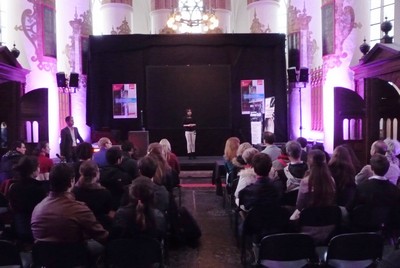
The stage was one of the most impressive in FameLab history. Host Bart van de Laar repeatedly urged the audience to come onstage during the breaks simply to look down the nave of the huge church.
The Der Aa-kerk church was chosen as the venue, because the host of this round of FameLab, the University of Groningen Science LinX Science Center, is co-hosting an exhibition here on 400 years of science at the University. The participants and their supporters had the opportunity to listen to live music or visit the many exhibits during the breaks. However, the main course for the evening was the FameLab science communication competition.
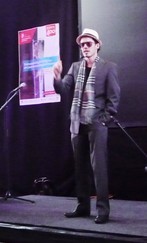
Fifteen young scientists – ranging from undergraduates to postdocs – had been selected from some twenty entrants to present their science story in exactly 180 seconds. They were given an afternoon training session before facing the jury, consisting of Professor of Physics Diederik Roest , Professor of Clinical Neuroengineering Natasha Maurits and molecular biology PhD student Thanasis Litsios , who won the Greek FameLab final five years ago.
The presentations were as diverse in subject matter as they were in style. Some chose simply to walk onstage and deliver a three-minute lecture. Others brought props, such as potatoes dressed as cancer cells, or came dressed up as a mafia boss or a plumber.
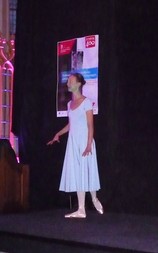
One participant wore a tutu to depict her story in dance, taking away not only the jury’s but also her own breath. At the other end of the spectrum, a mathematician discussed the ‘axiom of choice’ without any props or gimmicks. The candidate who soldiered on despite his headset microphone developing a glitch, and took the replacement handheld mike without blinking deserves special mention.
The jury could ask questions after each presentation, giving the participants a chance to demonstrate their passion for science outside those dreaded 180 seconds. It must be said that they all finished just before or a few seconds after the ‘squeak’ that signalled the end of their talk.
The jury finally had to decide who would make it to the finals in Amsterdam and the special preparatory training session at the Royal Netherlands Academy of Arts and Sciences (KNAW). Mathematician Gianmarco Bet (Eindhoven University of Technology) was rewarded with the runner-up spot for so bravely taking to the stage without props. He will join the training session but does not have a guaranteed place in the finals.
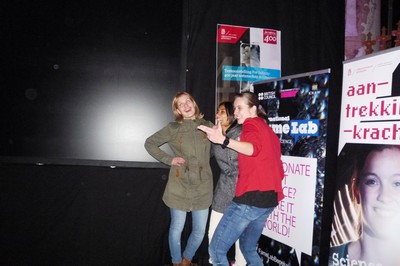
The three winners were:
‘Genetic plumber’ Maia Elliot, who dressed as a plumber to explain how cellular networks break down and cause cancer, and how they can be repaired. Elliot, an undergraduate at the University of York, is working on a research project at the University Medical Center Groningen (UMCG).
Arunima Roy (UMCG), who talked about how the ageing brain loses plasticity. She compared her own difficulty in learning to dance or play a musical instrument with the great ease of a young neighbour. ‘When we age, our brains turn from plastic clay into brick.’
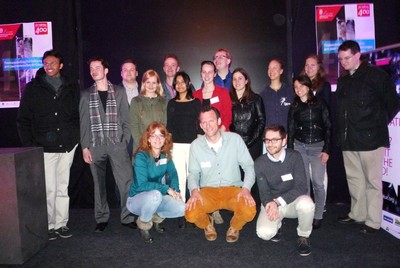
Mandy Koopman (a biology student at the University of Groningen), who gave a very strong performance, with the aid of a single rose – and a very expressive body – about the mating habits of fruit flies. ‘You know what they do on your fruit? They have sex!’ She explained how shunned males stop trying to mate for a couple of hours, apart from when they have Alzheimer-related memory loss. This makes them a useful model for testing drug candidates.
The evening ended at around ten. Although the temperature in the church had dropped below the level of comfortable, both visitors and participants, now in their coats, looked pleased. They had shared their passion for science.
| Last modified: | 01 March 2019 11.48 a.m. |
More news
-
29 April 2024
Tactile sensors
Every two weeks, UG Makers puts the spotlight on a researcher who has created something tangible, ranging from homemade measuring equipment for academic research to small or larger products that can change our daily lives. That is how UG...
-
16 April 2024
UG signs Barcelona Declaration on Open Research Information
In a significant stride toward advancing responsible research assessment and open science, the University of Groningen has officially signed the Barcelona Declaration on Open Research Information.
-
02 April 2024
Flying on wood dust
Every two weeks, UG Makers puts the spotlight on a researcher who has created something tangible, ranging from homemade measuring equipment for academic research to small or larger products that can change our daily lives. That is how UG...

